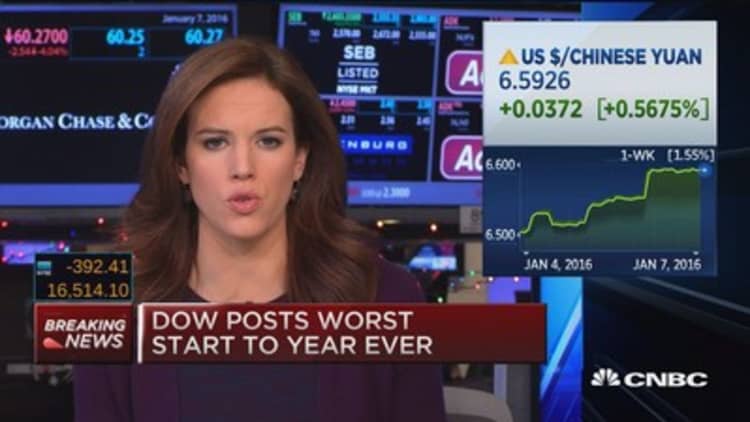The low-yielding euro fell for a second session against the dollar on Monday, as steadier global stock markets prompted investors to seek other currencies that provide better returns.
Wall Street shares and Europe's main bourses were firmer after a poor start to the new year, diminishing the appeal of the euro. Europe's common currency has been used in recent months in carry trades, with investors selling the euro because of its near-zero interest rate and buying other higher-yielding currencies such as the dollar and sterling.
"Modestly improved risk sentiment was enough to cause the euro to lose some ground against the U.S. dollar," said Joe Manimbo, senior market analyst at Western Union Business Solutions in Washington.
But the euro's retreat may be temporary as uncertainty about China and slumping commodities remains on the forefront of investor concerns.

"We think that the benefits of the deteriorating risk environment, coupled with the generally upbeat tone of European data ex-inflation should balance out the otherwise negative effects the ECB's (European Central Bank) ongoing efforts to stimulate the region may have," said Christopher Vecchio, currency analyst, at DailyFX in New York.
The euro fell 0.48 percent against the dollar to $1.0866, sliding 0.23 percent as well versus the to 127.73 yen.
The dollar benefited from improving risk sentiment, rising as well against the . The greenback was last up 0.25 percent at 117.53 yen.
The dollar was also up 0.57 percent versus the Swiss franc at 1.0004 franc..
China's yuan, meanwhile, jumped on foreign exchange markets on Monday, and was heading for its biggest daily gain in four months against the dollar in offshore trade after reports of another round of aggressive intervention by Beijing.
The tightly controlled onshore rate for the yuan strengthened 0.35 percent to 6.5701 per dollar after the PBOC set its daily mid-point rate higher for a second day. Offshore rates gained 1.2 percent to 6.6030, rivaling the yuan's biggest one-day move upwards since the launch of the offshore market in 2010.
The , the main proxy for Chinese sentiment in the G10 list of major developed world currencies, recovered from a four-month low to stand 0.46 percent higher at US$0.6985.



